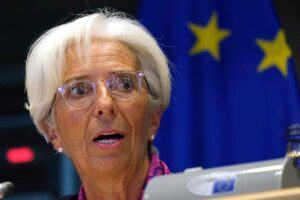For a long time, many countries ignored digital currencies such as Bitcoin and altcoins because they considered the crypto world to be a playground for a rather small group of digital nerds. Later, states increasingly recognized the technical possibilities, but largely interpreted them as a threat to the traditional financial system. At the latest with the announcement of the stablecoin plans of the social media giant Facebook – initially under the project name Libra, now managed as Diem – governments and central banks saw themselves exposed to a supposedly great threat. Initially, national and international politics struggled to put obstacles in Facebook’s way and announced ever new regulatory measures. Gradually, countries are beginning to address possible use cases of blockchain and other crypto technologies themselves. In the following, CoinPro.ch shows where selected states stand in their considerations regarding digital central bank money.
Long at the Forefront: the People’s Republic of China
But elsewhere, too, work is now underway on Digital Central Bank Money (CBDC). Reason enough to take a look at some selected countries and their activities around “Central Bank Digital Currencies” and the progress of initial concepts.
Switzerland – Continued Expansion of its Leading Role in Europe
In Europe, Switzerland remains a pioneer when it comes to the recognition of new technologies. The legal situation was put on a trend-setting path in 2020. The House of Representatives has sent signals for the transfer of digital assets into national law. The “Blockchain Act” could attract many crypto and blockchain companies to Switzerland. The first phase was launched at the beginning of February. Changes to the structures of the Swiss financial market are planned from August. Heinz Tännler, president of the Swiss Blockchain Association, commented positively on the development. Switzerland, according to Tännler, will be one of the most advanced countries in the world. Some companies have already submitted license applications to the responsible FINMA, others are planning to submit them.
The asset manager Crypto Finance recently announced that it had received a securities license for a broker platform. The list of new crypto products and services will also include trading in security tokens. Providers such as SEBA Bank want to issue token-based shares via blockchain. A new licensing category will enable trading in a wide variety of digital securities.
Germany – many Ideas, but Little Activity?
In Germany, there is an active discussion about digital central bank money. Of course, the question is also whether and how a possible digital euro can be made available to the public. At the latest through the so-called “Blockchain Strategy” of the Federal Government, the CBDC topic must play a role. The government wants to strategically weigh up in which areas national economies in Europe can benefit from economic digitization and systems such as Bitcoin. Distributed ledger technology (DLT) is at the center of many considerations for the digitization of payment and financial networks. In Germany, it was the German Banking Association, among others, that repeatedly called for a European solution to a CBDC in 2020. The association recently went so far as to describe such a solution as “indispensable.” But there is still relatively little happening in Germany. The EU is now relying on a “Task Force” for research. It is to play through different scenarios for CBDC application and report.
France – Central Bank Relies on Private Partners
Neighboring France is one step ahead of Germany in terms of digital central bank money. As early as the summer of 2020, many industry media reported on a first test run for a digital euro by the Banque de France, i.e. the central bank of France. Since then, the country has been striving for the position of a leading nation in international competition and for the first digital currency of a central bank. The pilot project refers to a “Wholesale CBDC”, i.e. a currency for use in interbank business. The special feature of the French central bank’s approach. Even if so-called non-banks are initially excluded, one aspect is particularly interesting: France’s central bank is expressly relying on private sector support.
The partners include companies such as Société Générale and HSBC, but also service providers such as the LiquidShare platform, which is known for issuing security tokens (including a euro stablecoin). Whether and how a digital euro based on blockchain can be used in trading financial instruments is the focus of the test – as is the question of whether a digital euro offers opportunities in connection with cross-border currency transfers.
Sweden – Far ahead of many other European Countries
Northern European Sweden is probably the leader at the moment when it comes to possible applications of a CBDC. The local central bank has been working on researching a potential introduction of digital central bank money for around five years. The so-called “E-krona” could also change society as a whole in the near future. In particular, the responsible experts in the country are weighing up whether digital payment models can be expanded and improved more quickly than before with the help of a CBDC. Sweden’s Riksbank is regarded by many industry experts in this context as a pioneer within Europe. This was quite obvious. After all, the country, like other Scandinavian countries, is considered particularly open to the digitization of the financial system. Here, a “Retail CBDC” as digital central bank money for society in general and thus also private individuals and private companies would be conceivable, which is used token-based parallel to the established monetary system.
China – Declaration of War towards Facebook and the USA
The People’s Republic of China presents itself as particularly progressive with regard to the possible introduction of a digital central bank currency. Instead of theoretical thought experiments, there have already been practical tests there. For example, government officials have the option of having salaries paid out proportionally in a CBDC. The state has promised investments in the billions for the development and research of the blockchain. New reports on further tests on an E-Yuan followed only at the end of 2020. As part of a lottery, the population in the Suzhou region was able to secure packages worth 200 digital yuan in December 2020. The pilot project comprised a total of 100,000 packages with a total value of the equivalent of three million US dollars.
Package recipients were able to use the “Digital Currency Electronic Payment” (DCEP) system within the annual Double 12 shopping festival to use their E-Yuan in stores and online shops. The optional use in stationary retail is an international specialty here. It was already the second project of this kind. In October, citizens in the city of Shozhou could already test the CBDC application. According to the governor of the Chinese People’s Bank, around four million transactions had been carried out in connection with the state cryptocurrency in November 2020. China is probably so active precisely because the state sees the increasing use of Bitcoin as a threat to state surveillance of the population.
USA – which Measures Will the New Government Take?
Many crypto advocates in the USA warn that the United States could increasingly fall behind in the competition with China due to too much discussion and restraint. FED chief Jerome Powell had repeatedly emphasized that the USA was not pursuing the goal of being the first country to put digital central bank money into circulation. Instead, Powell pointed out that the USA could play out an advantage as a so-called “First-Mover” due to the role of the US dollar as a global reserve currency. In view of the plans and initial successes of other states, the reality at least feels different. Especially since: The USA is a country where more and more people prefer digital payments to the use of cash – the situation is similar to that in Sweden. Powell’s statements sounded correspondingly different at the beginning of 2021.
The chairman of the US Federal Reserve announced that the USA needed a digital currency to cope with the rapid spread of stable light technologies. According to Paul, a CBDC now has “very high priority” – in particular to combat bad money in the private sector, as Powell put it. The hopes of CBDC fans now rest on the new US government. The Biden cabinet could be less critical than the government under Trump. The Federal Reserve Bank of Cleveland, at least, presented a policy paper in September 2020. The FED in question has developed and subjected to initial tests several DLT platforms in order to define possible advantages.
Bahamas Launch First Nationwide CBDC Worldwide
While other states are only toying with the idea of their own CBDC developments, the Bahamas are leading by example. In the fall of last year, the central bank of the island state announced the introduction of the “world’s first CBDC”. The Central Bank of the Bahamas announced at the end of October that the virtual “Sand Dollar” was now available nationwide. There is no question that such a start with a population of around 400,000 people is technically less complex than in states like the USA: Nevertheless, this step was nothing less than a global milestone. Citizens of the country can now make transfers with the currency via mobile phone. This was and is important because the proportion of the population without such a mobile device is now very small. CBDC payments via a state-approved digital wallet are possible in the country for very low fees. The payment partner is the service provider NZIA.
The introduction was not a quick shot. Experts have been working flat out on pilot projects for years. Important to know: Sand Dollars are tied to the Bahamian dollar and thus to the US dollar.
Digital Central Bank Money in Austria – 2021 could Set a New Course
As in most countries in Europe, there is skepticism in Austria regarding digital central bank money. As part of the plans of the European Central Bank (ECB), a digital euro is also being increasingly considered here. Europe’s central bank presidents are to decide on the launch of an E-Euro by mid-2021. Many experts agree: Austria’s central bank will also increasingly declare a CBDC a matter for the boss. There will probably also be a corresponding test phase in the Alpine republic. If successful, availability would be possible as early as the beginning of 2022. And that throughout Europe. A supporting role for Austria in connection with a digital EU central bank money speaks for the fact that the country already has a number of important crypto and blockchain companies such as the Vienna crypto exchange Bitpanda.



